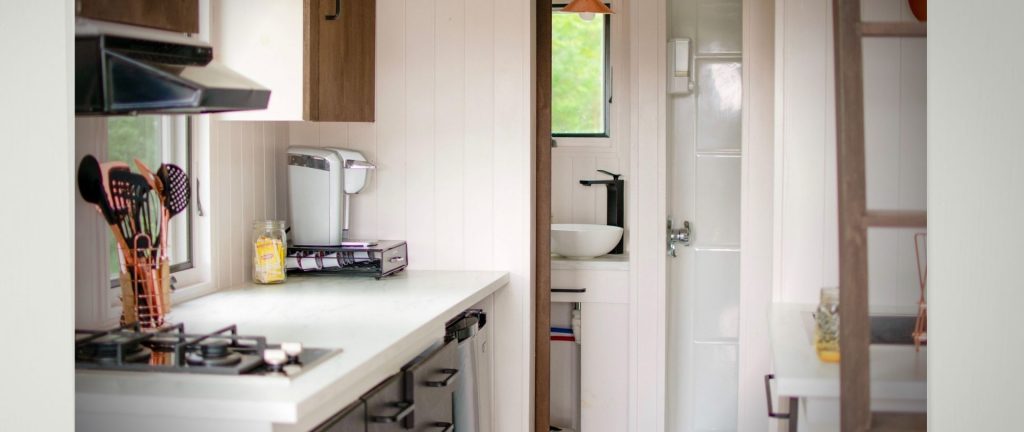Tiny Homes on Wheels, Our Innovative Housing Solution
Considering the unique challenges of finding cheap housing in California, we believe the best solution to serve low-income families (including our foster youth) is through the construction of tiny houses. California housing is some of the most expensive in the nation; homeownership has never been more unattainable. Even “affordable housing in LA has cost taxpayers $700,000 for a one room unit that will always be rent only. That’s why Finally Family Homes created an innovative Tiny House Construction program to help aging-out foster youth become homeowners for 1/10th of the cost.
One of the most significant challenges for California foster youth sent out of foster care alone is finding a place to call home. Even “affordable housing” is out of reach, with long waiting lists and red tape in the way.
At Finally Family Homes, it’s our mission to partner with young adults facing challenges -including those aging out of foster care to help them overcome barriers and achieve lasting success. We have built 2 tiny homes on wheels alongside former foster youth who are now homeowners!
Get a tour of our latest tiny home here.
At this time, our tiny house program is on hold while we focus on our other programs. Want to learn more about tiny homes and how they can be an affordable housing solution? Keep reading!
Tiny Homes in California
Most of the hype around tiny homes in California has been a newer innovation that latched on to the name “tiny home” but doesn’t live up to the same standard. Most of the “tiny homes villages” you’ve probably seen on the news are actually emergency shelters made to be an upgrade from a tent. This is NOT what we are building at Finally Family Homes.
If you’d like to see more of what we are building – look up tiny homes on wheels on YouTube, HGTV, or Netflix. We are building what amounts to a guest house or single unit apartment – it just happens to be extra sturdy because it can go on the highway! Truth be told we’d love to have a permanent tiny home community like this one, someday.
If you aren’t familiar with tiny homes on wheels, you may be wondering:
- Are tiny homes legal in California?
- What cities in California allow tiny homes?
- How much does a tiny home cost in California?
- Can you permanently live in a tiny home?
Tiny Homes Are Legal in California
Sometimes people ask, “Are tiny homes legal in California?” Tiny homes aren’t technically “illegal” anywhere in California. But depending on your jurisdiction, they could be categorized in a way that violates zoning laws. For example, a city may have laws against living in a recreational vehicle in certain zones. You could get into trouble if you park (and live) in a backyard in that city since they consider a tiny house a recreational vehicle.
According to Business Insider, California is the most popular place in the country for tiny home living. In fact, Fresno was the first city in the nation to approve tiny homes on wheels as legal dwelling units. Parking a tiny home on wheels as a backyard accessory dwelling unit (ADU) in Los Angeles became legal in December 2019. There are many tiny home communities all around California.

Cities in California That Allow Tiny Homes
California City allows Tiny Houses on single lots, not just as ADUs! Of course, you can always park a tiny house in a tiny home village. Many mobile home and RV communities also allow tiny homes on wheels to park there.
Several cities and counties across the state have provisions or zoning for them:
- Los Angeles (visit here to see LA zoning laws for tiny houses on wheels)
- Richmond
- San Jose
- San Diego
- Placer County
- Santa Clara County
- California City
You can read more here about the many places to legally place a tiny house on wheels in California.
How Much Tiny Homes Cost
The cost of building a tiny house varies wildly. Jay Shafer, the Godfather of the tiny home movement, built this house for $5,000. But that was a while ago, and definitely one of the cheapest tiny homes. Large, decked-out tiny homes can go for $200,000 or more on the high end.
If you’re wondering, “Is buying or building a tiny house cheaper?” Generally speaking, for those who build, it will cost about half as much to build it yourself. That’s because labor is expensive. However, your time is also valuable. If you have a lot of it ,and some skills, it may be worth it to build your own. For safety purposes, it’s important that you get skilled help where needed (electrical, plumbing, etc.). The risks of shoddy work could negate any of the savings.
At Finally Family Homes, our program isn’t about giving away housing. As a part of the program, our participants are involved in the building process. They learn basic construction and life skills in a caring and fun environment. With the help of donated materials and volunteer skilled laborers, we estimate we can build our tiny houses at Finally Family Homes for about $30,000. The youth who receive a tiny house are required to put in hundreds of hours building and to contribute financially to the cost of the tiny house (mostly in finishing products).
Also keep in mind we aren’t building luxury tiny homes, these are “starter homes,” which is appropriate for a young adult starting out on their own. We do allow participants to “upgrade” certain things if they’ve saved up and can pay for it themselves.
Thank you to Pad Tiny Houses for generously sharing your beautiful Hikari tiny house plans with us. Visit Pad Tiny Houses to learn more about their designs and homes.
You Can Permanently Live in a Tiny Home in California
You can absolutely live permanently live in a tiny house in California and many other places!
That’s a huge part of the draw for us at Finally Family Homes – giving permanency to these young adults who’ve lacked it for so long. Not only can they live in a place they own, but they’ll also be able to fix it and make upgrades, having learned the skills to build it. If their living situation changes, they can take it with them to the next opportunity, whether it’s graduate school or a new job. This way, it’s more permanent than a house on a foundation.
How Tiny House Ownership Benefits Our Youth and Community
There’s an affordable housing crisis, which is a major contributor to our homelessness crisis in California. Building tiny homes on wheels cuts through red tape and allows construction to be completed more quickly.
When a young adult joins our Tiny House program, they will be given an opportunity to be placed in a caring and safe transitional host home while they work on their tiny house. They will receive additional wrap-around services, including life skills through our Life Launch program, to help them build and maintain success in multiple areas of life. And as we do for all our youth at Finally Family Homes, we care for our tiny home builders personally and intentionally through our Family Care program.
Living in an owned tiny home means that our youth can have more control over their environment. They can paint the walls, upgrade their bathroom, or make any other personalization or investment not allowed in a rental. They can make sure maintenance is done properly and promptly, avoiding the risks of being stuck under a slumlord.
As we pause our tiny house construction program we invite you to learn more about our Oasis Resource Center and Host Homes Program – our more immediate interventions to homelessness.
